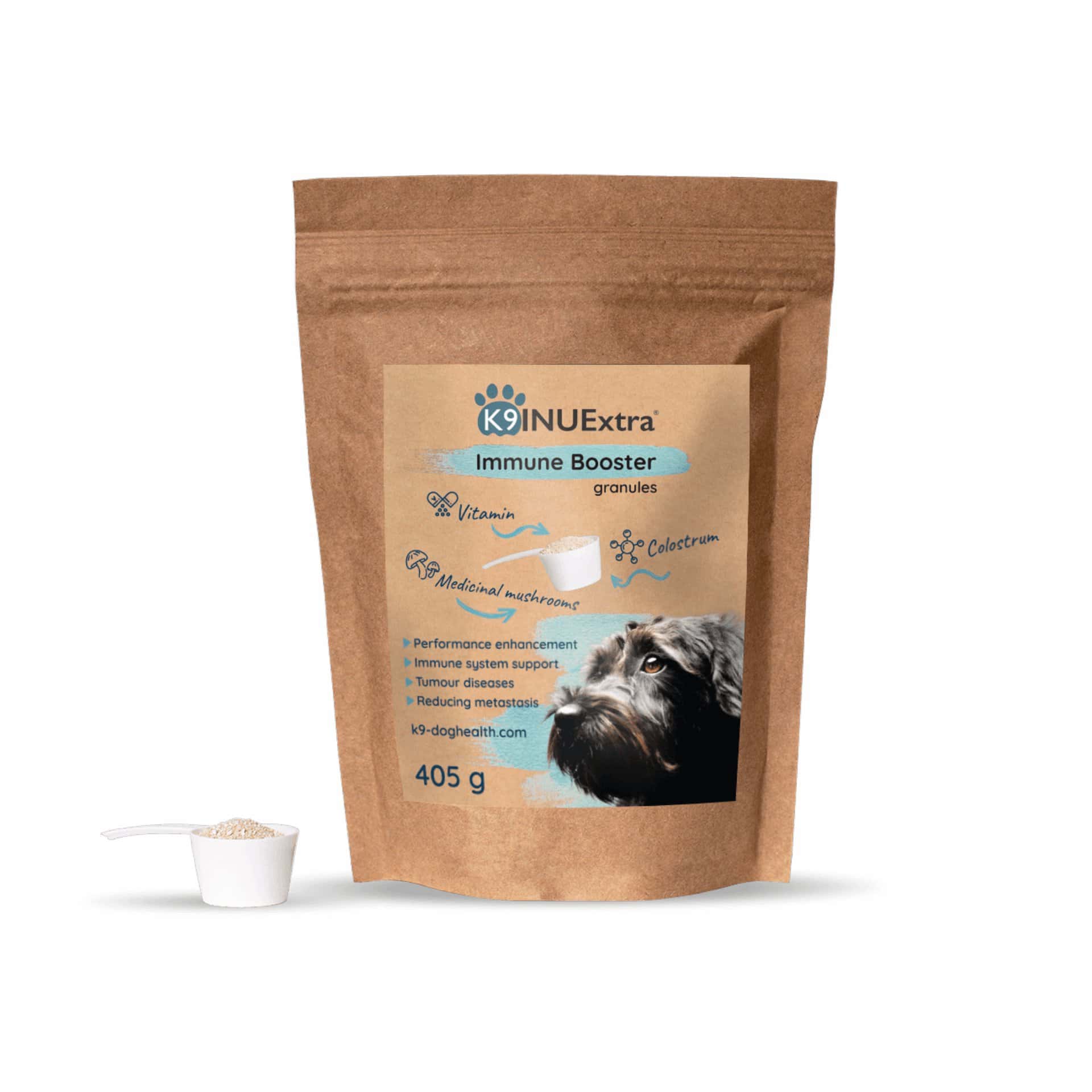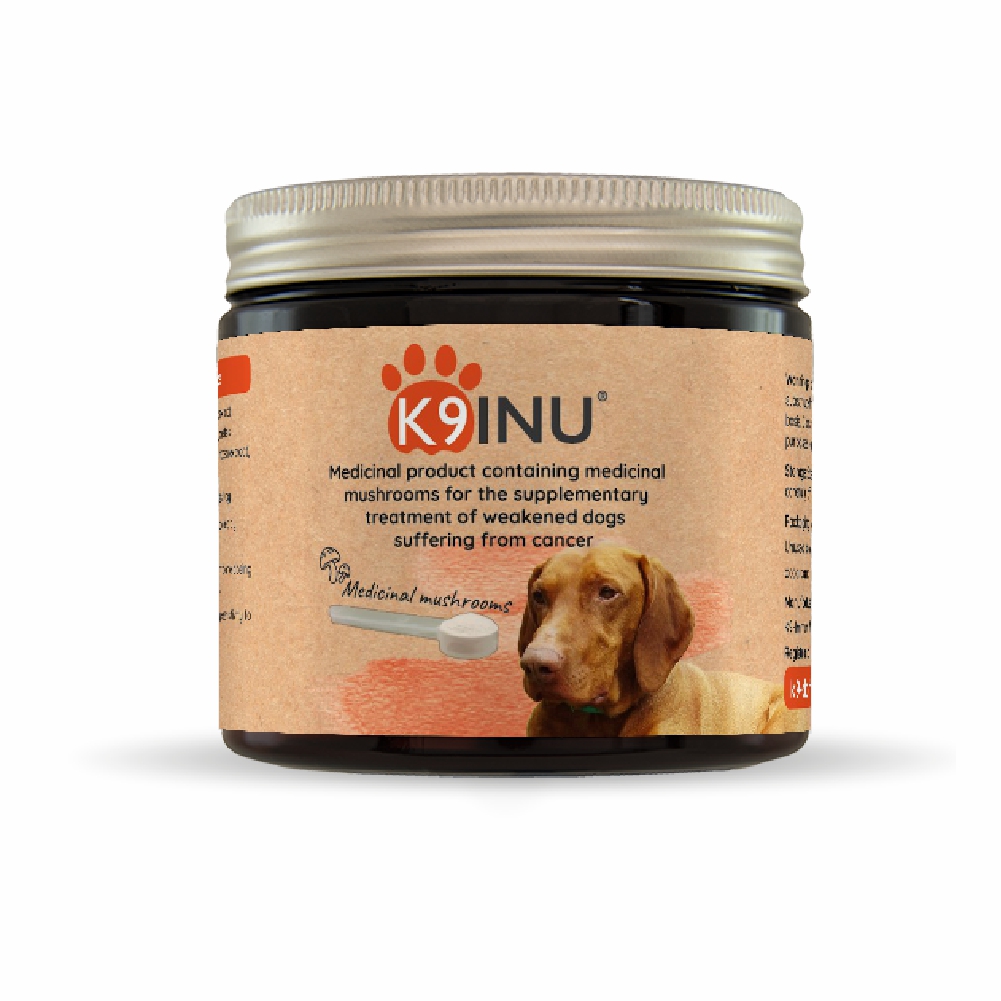Hemangiosarcoma (tumor of blood vessels) is a very common, highly malignant type of cancer in dogs, and metastases often appear in the initial stages.
Hemangiosarcoma occurs mainly in areas rich in blood vessels. However, it can actually appear anywhere in the body, both on the surface and inside the body. It attacks the blood and blood vessels and through them the vital organs, the spleen, the liver, and the heart. It can occur in the bone, kidneys, or bladder, but certain types of sarcoma can also appear on the surface of the skin or under it.
Because this tumour grows on blood cells, often the tumours themselves are full of blood. The tumour then ruptures, causing internal bleeding.
It can occur in dogs of all ages and breeds, but is perhaps more common in older males, particularly boxers, setters, shepherds and retrievers.
Symptoms of hemangiosarcoma in dogs
In lucky cases, it can be diagnosed by palpation. Unfortunately, in many cases this type of cancer has no visible symptoms. The dog will play, eat and sleep as normal and only show signs when the tumour is very large and has metastasised.
The symptoms depend largely on the location of the tumour. There may be general weakness, lethargy, loss of appetite, vomiting, sudden weight loss, nosebleeds, fainting, anaemia. Pale mucous membranes, abnormal heart rhythm, abdominal distention, dark reddish bumps on the skin or hard but free-moving swelling under the skin surface.
Symptoms of the three most common types of hemangiosarcoma in dogs
Splenic hemangiosarcoma
Hemangiosarcoma is a vascular tumor, meaning it originates from the blood vessels, often leading to large, blood-filled masses in the spleen. These tumors are fragile and can easily rupture, causing severe internal bleeding in the abdominal cavity. While some dogs may remain asymptomatic for a long time, pet owners usually notice sudden symptoms following a splenic rupture, such as:
- Weakness
- Pale gums
- Lethargy
- Decreased appetite
- Enlarged, distended abdomen
Cardiac hemangiosarcoma
This type of tumor affects the heart, reducing its efficiency in circulating blood properly. The tumors are fragile, and bleeding can occur into the pericardium (the fluid-filled sac surrounding the heart), causing pericardial tamponade. As the disease progresses, the following symptoms may appear:
- Collapse or fainting
- Lethargy
- Weakness
- Coughing
- Difficulty breathing
- Reduced stamina (fatigue during walks or exercise)
- Vomiting
Cutaneous or subcutaneous hemangiosarcoma
This type develops on the skin’s surface or just beneath it, typically appearing as a lump, nodule, or blister-like lesion. If detected early, affected dogs often remain in good overall condition. In cases of cutaneous hemangiosarcoma, owners may observe the following symptoms:
- Reddish or purplish bump, most commonly in sparsely haired areas like the abdomen or limbs
- Bleeding or bruising around the tumor
- Direct bleeding from the tumor
- In advanced stages: lethargy, lameness, loss of appetite, weakness, or other general symptoms
Important: If you notice any of these symptoms in your dog, consult a veterinarian immediately! Hemangiosarcoma progresses rapidly, and early diagnosis can be life-saving.
Treatment of hemangiosarcoma in dogs
However, early detection, modern treatments, appropriate cancer diet and the use of immunomodulatory therapy (K9 INU® and K9 InuFactor®) can significantly increase the chance of a favorable result.
Hemangiosarcoma is basically a disease that develops as a result of improper functioning of the immune system!
Hemangiosarcoma develops when the immune system fails to recognize abnormal cells as invaders. These cells form weak-walled blood vessels that grow into a tumor. Eventually, the tumor bursts, causing internal bleeding.
Traditional Asian medicine and, in recent years, modern medicine have also used special natural compounds to treat cancer. Their purpose is to try to correct the immune system’s malfunction.
The role of immunomodulatory therapies in canine cancer
Immunomodulatory therapies are gaining increasing attention in the treatment of cancer in dogs, as they can support the immune system’s natural defense mechanisms, thereby enhancing the effectiveness of treatments and improving quality of life. These therapies can be particularly beneficial in cases of hemangiosarcoma and lymphoma, but they also play an important role as complementary treatments for other types of cancer.
How do immunomodulatory therapies work?
The goal of immunomodulatory agents is to enhance the body’s own ability to defend itself against cancer cells. This can be achieved in several ways:
- Activation of immune cells: They stimulate the activity of cells such as T-cells and natural killer (NK) cells, which recognize and destroy cancer cells.
- Reduction of inflammation: Tumors often develop in a chronic inflammatory environment. Immunomodulators regulate this inflammation, which can inhibit tumor growth.
- Improvement of intercellular communication: They help immune system cells communicate more effectively, allowing faster recognition of abnormal cells.
When is immunomodulatory therapy recommended?
Immunomodulatory therapies can be effectively used in the following situations:
- In the early stages of cancer, as an adjunct to primary treatments.
- After surgery or chemotherapy, to support recovery.
- In chronic conditions, to improve quality of life and slow tumor growth.
- As part of palliative care, when a complete cure is no longer possible, but the goal is to improve quality of life.
Immunomodulatory therapy in hemangiosarcoma
Hemangiosarcoma is an aggressive, blood vessel-derived cancer that can severely affect a dog’s overall health and immune system function. Although this type of tumor does not directly target immune system cells, immunomodulatory therapies still play a crucial role:
- Restoring immune system balance: The progression of the tumor and chemotherapy treatments can significantly weaken the immune system. A stronger immune system can enhance the body’s natural defense mechanisms.
- Reducing the risk of infections: Dogs with hemangiosarcoma are often in a weakened state, especially after internal bleeding caused by the tumor, surgeries, or chemotherapy. Supporting the immune system helps prevent opportunistic infections.
- Enhancing the effectiveness of chemotherapy and other oncological treatments: A stronger immune system can more effectively recognize and destroy cancer cells, supporting the body’s natural healing processes.
An example of such immunomodulatory therapy includes medicinal mushrooms commonly used in traditional Asian medicine.
Haemangiosarcoma and immunomodulatory therapy

Surgery and chemotherapy are essential to remove the tumour that has already developed. However, it is primarily the body’s own strength that is needed to help the dog defeat the disease.
It is therefore crucial to place great emphasis on strengthening the immune system alongside veterinary treatments!
Enhancing the immune system is crucial when dealing with cancers such as lymphoma, osteosarcoma, mastocytoma, hemangiosarcoma, mammary tumors in dogs, or any condition linked to immune system dysfunction. True recovery can only begin when the body initiates its own response to the disease; otherwise, treatments remain focused solely on managing symptoms.
Many vets say, rightly so, that you can only prolong the dog’s life, but the tumor is still there. If a significant portion of the tumor can be removed and the liver is not affected, dogs with hemangiosarcoma usually respond well to a combination of conventional treatments and some form of immune-supportive therapy, such as K9 INU® and K9 INUExtra®.
A proper diet is essential
Cancer ranks among the most common causes of death in dogs, and many professionals believe that poor nutrition plays a major role. Despite being natural carnivores, dogs are often fed commercial diets based on cereals like wheat. Their digestive systems are not equipped with the necessary enzymes to break down and absorb nutrients from grains effectively. When dogs consume grain-heavy diets, they may fail to receive key nutrients, which can weaken their immune defenses and make them more vulnerable to illnesses—including cancer.
If poor dietary choices truly contribute to cancer development, then proper nutrition becomes a cornerstone of cancer care. Dogs diagnosed with cancer benefit greatly from a diet that is both balanced and rich in essential nutrients. Providing the right kind of nourishment can strengthen the body’s natural defenses and support the healing process. It’s also important to remember that a high price tag or popularity doesn’t necessarily mean a dog food is well-suited for a dog with cancer. If you want to learn more, check out our article on how to feed a dog with cancer.
Learn more about dog tumor types
Kattints ide, ha magyarul szeretnél olvasni a kutyák hemangiosarcoma betegségéről. Or click here to read about dysplasia or other tumor diseases in Hungarian.




